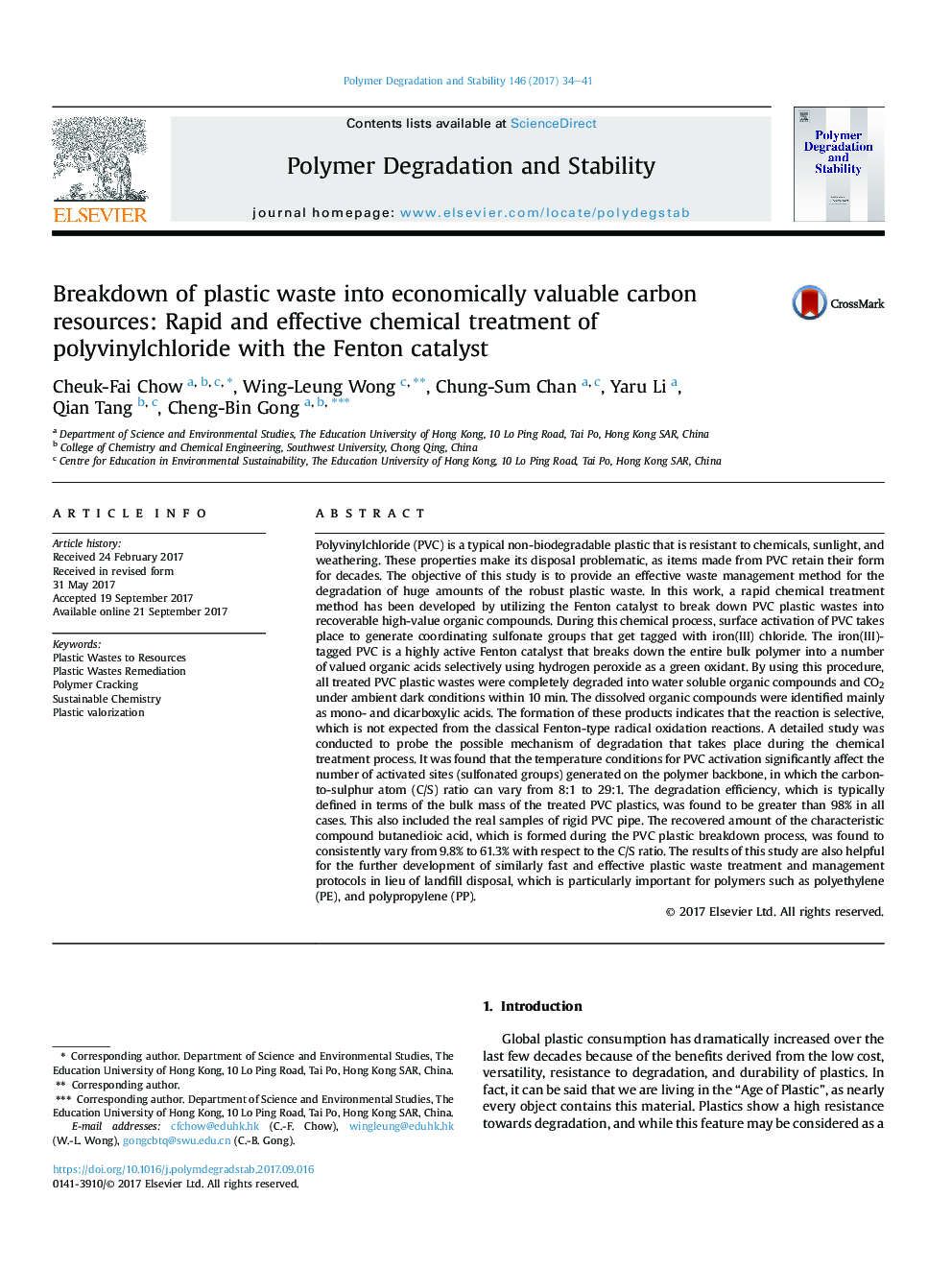| کد مقاله | کد نشریه | سال انتشار | مقاله انگلیسی | نسخه تمام متن |
|---|---|---|---|---|
| 5200632 | 1502867 | 2017 | 8 صفحه PDF | دانلود رایگان |
Polyvinylchloride (PVC) is a typical non-biodegradable plastic that is resistant to chemicals, sunlight, and weathering. These properties make its disposal problematic, as items made from PVC retain their form for decades. The objective of this study is to provide an effective waste management method for the degradation of huge amounts of the robust plastic waste. In this work, a rapid chemical treatment method has been developed by utilizing the Fenton catalyst to break down PVC plastic wastes into recoverable high-value organic compounds. During this chemical process, surface activation of PVC takes place to generate coordinating sulfonate groups that get tagged with iron(III) chloride. The iron(III)-tagged PVC is a highly active Fenton catalyst that breaks down the entire bulk polymer into a number of valued organic acids selectively using hydrogen peroxide as a green oxidant. By using this procedure, all treated PVC plastic wastes were completely degraded into water soluble organic compounds and CO2 under ambient dark conditions within 10Â min. The dissolved organic compounds were identified mainly as mono- and dicarboxylic acids. The formation of these products indicates that the reaction is selective, which is not expected from the classical Fenton-type radical oxidation reactions. A detailed study was conducted to probe the possible mechanism of degradation that takes place during the chemical treatment process. It was found that the temperature conditions for PVC activation significantly affect the number of activated sites (sulfonated groups) generated on the polymer backbone, in which the carbon-to-sulphur atom (C/S) ratio can vary from 8:1 to 29:1. The degradation efficiency, which is typically defined in terms of the bulk mass of the treated PVC plastics, was found to be greater than 98% in all cases. This also included the real samples of rigid PVC pipe. The recovered amount of the characteristic compound butanedioic acid, which is formed during the PVC plastic breakdown process, was found to consistently vary from 9.8% to 61.3% with respect to the C/S ratio. The results of this study are also helpful for the further development of similarly fast and effective plastic waste treatment and management protocols in lieu of landfill disposal, which is particularly important for polymers such as polyethylene (PE), and polypropylene (PP).
Journal: Polymer Degradation and Stability - Volume 146, December 2017, Pages 34-41
